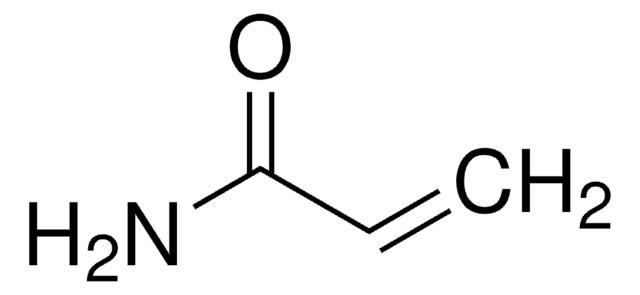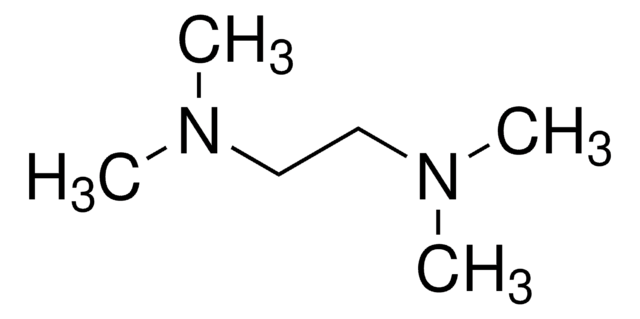A2792
Acrylamide/Bis-acrylamide
BioReagent, for molecular biology, 29:1 (ratio)
Synonym(s):
Acrylamide/Bisacrylamide, 29:1 (3.3% crosslinker), Polyacrylamide solution
About This Item
Recommended Products
grade
for molecular biology
Quality Level
product line
BioReagent
form
powder
feed ratio
29:1 (ratio)
foreign activity
DNase, RNase and protease, none detected
SMILES string
NC(=O)C=C.C=CC(=O)NCNC(=O)C=C
InChI
1S/C7H10N2O2.C3H5NO/c1-3-6(10)8-5-9-7(11)4-2;1-2-3(4)5/h3-4H,1-2,5H2,(H,8,10)(H,9,11);2H,1H2,(H2,4,5)
InChI key
OCQZXMCGTAWGEQ-UHFFFAOYSA-N
Looking for similar products? Visit Product Comparison Guide
Related Categories
General description
Application
Features and Benefits
Reconstitution
For the 1 Liter size, use 630 mL of water.
signalword
Danger
Hazard Classifications
Acute Tox. 3 Oral - Acute Tox. 4 Dermal - Acute Tox. 4 Inhalation - Carc. 1B - Eye Irrit. 2 - Muta. 1B - Repr. 2 - Skin Irrit. 2 - Skin Sens. 1 - STOT RE 1 Oral
target_organs
Peripheral nervous system
Storage Class
6.1C - Combustible, acute toxic Cat.3 / toxic compounds or compounds which causing chronic effects
wgk_germany
WGK 3
flash_point_f
Not applicable
flash_point_c
Not applicable
ppe
Eyeshields, Faceshields, Gloves, type P2 (EN 143) respirator cartridges
Certificates of Analysis (COA)
Search for Certificates of Analysis (COA) by entering the products Lot/Batch Number. Lot and Batch Numbers can be found on a product’s label following the words ‘Lot’ or ‘Batch’.
Already Own This Product?
Find documentation for the products that you have recently purchased in the Document Library.
Customers Also Viewed
Our team of scientists has experience in all areas of research including Life Science, Material Science, Chemical Synthesis, Chromatography, Analytical and many others.
Contact Technical Service





